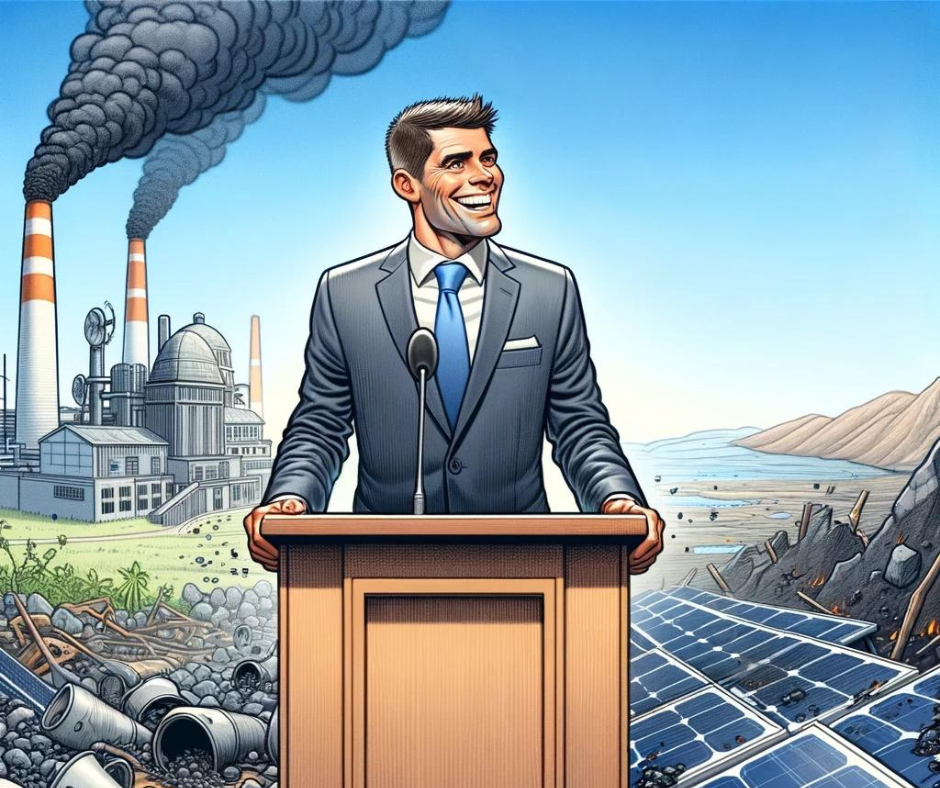Carbon Tax Bill Won’t Meet Promised CO2 Targets
Updated with new fiscal information - 2/21/2018
The carbon tax bill promises to address an “existential threat” to the future of Washington state. And yet, by sending two-thirds of the funding to special interests and funding costly but ineffective projects, it is very unlikely the bill, if passed, will live up to its promises.
Senator Reuven Carlyle, the prime sponsor of the carbon tax bill, told TVW the key to reducing carbon emissions is how government spends the revenue it receives from raising taxes. Sen. Carlyle said, “how we spend those dollars is incredibly important,” arguing the spending would be necessary to “meet Paris-level agreements.”
In practical terms, this means Washington has to reduce CO2 emissions to 40 percent below 1990 levels by 2035 to meet the targets of the Paris Climate Accord, about 53 million metric tons (MMT) of CO2. So, can we actually meet those targets with the political approach of this bill? The answer is pretty clearly, “no.”
The carbon tax bill creates a number of barriers to achieving the goal.
First, less than one-third of the funding goes to CO2-reduction projects. Of the one half of the total funding dedicated to the “Energy Transformation Account,” but ten percent of that account is skimmed off for “environmental justice,” another large portion goes to offset “lost revenue” for transportation projects, and a final portion goes to administration of the program.
Second, the bill funds projects that are expensive and ineffective. Currently, there are technologies that can reduce one metric ton of CO2 for about five dollars. By way of comparison, however, the carbon tax bill allows spending $100 to reduce one ton of CO2, which is about twenty-times the cost of what is available.
Additionally, not every project will go exactly according to plan. The wording of the bill itself admits this is the case, specifically calling on the Department of Commerce to audit projects and, if necessary, recover money that did not achieve the goal. This caution is wise. The history of government-funded projects is extremely poor. We have provided many examples in the past. For our anlaysis we assume the projects will deliver 90 percent of the carbon reductions they promise.
Finally, in 2015, the most recent year on record, Washington state emitted 98.3 MMT of CO2. The Department of Ecology, however, projects that in 2018, we will emit only 93.5 MMT. I am skeptical of this because the only time we saw that large a drop in emissions over three years was between 2008 and 2011. Essentially, using Ecology's projection makes it easier to hit the target because we get a head start toward the goal. Assuming we will see the same reduction during the last three years that we saw during the economic downturn seems like a stretch. So, I used both the 2015 number and the 2018 projection as a baseline.
With those numbers, the results indicate we are unlikely to meet the CO2 reduction targets of the Paris Climate Accord. For example, although the bill allows spending $100 to reduce one ton of CO2, an average cost of just $50 per MT yields only 47% of the cumulative CO2 reductions necessary by 2035, using Ecology's optimistic 2018 starting point. At $30/MT we only get 78.5% of the necessary CO2 reductions. Only at $20 do we get 110% of the necessary reductions, and that assumes Ecology's optimistic 2018 emissions projections. If, however, we assume this year's emission are closer to the 2015 numbers, we fall short, achieving only 98% of the necessary emissions reductions.
Put simply, even though the bill allows the state to spend $100 to reduce one MT of CO2, it must spend only $20/MT on average in order to actually hit the goal. Given the lax restrictions in the bill, it is very unlikely we will actually hit that goal.
You can see my calculations here: ![]() SB 6203 CO2 Reduction Projections . I’m happy to answer questions about the assumptions I made and anything that isn’t clear.
SB 6203 CO2 Reduction Projections . I’m happy to answer questions about the assumptions I made and anything that isn’t clear.
Fundamentally, the notion that a political program can spend money effectively to reduce carbon emissions is flawed. The many carveouts, preferences for unions and “environmental justice,” funding transit agencies, and other political decisions demonstrate that CO2 emissions are, ironically, only ancillary.
Assuming, however, the authors will continue pushing the legislation and are serious about reducing carbon emissions, they need to tighten the rules for expenditures dramatically.
- Rather than allowing projects that cost up to $100 per MT, the rules should put a limit of no more than $30.
- Grants should require a contract guaranteeing delivery of CO2 reductions with penalties for failure.
- Remove the preferences that undermine effectiveness like preference for projects with union labor, “environmental justice” payouts, and other payments to special interests that have nothing to do with cutting emissions.
Even these improvements would only put lipstick on a pig, but at least they would begin to move in a direction where effectiveness was the goal. As the bill currently stands, it has become a special interest money grab that won’t even solve the problem that purportedly justifies it.





